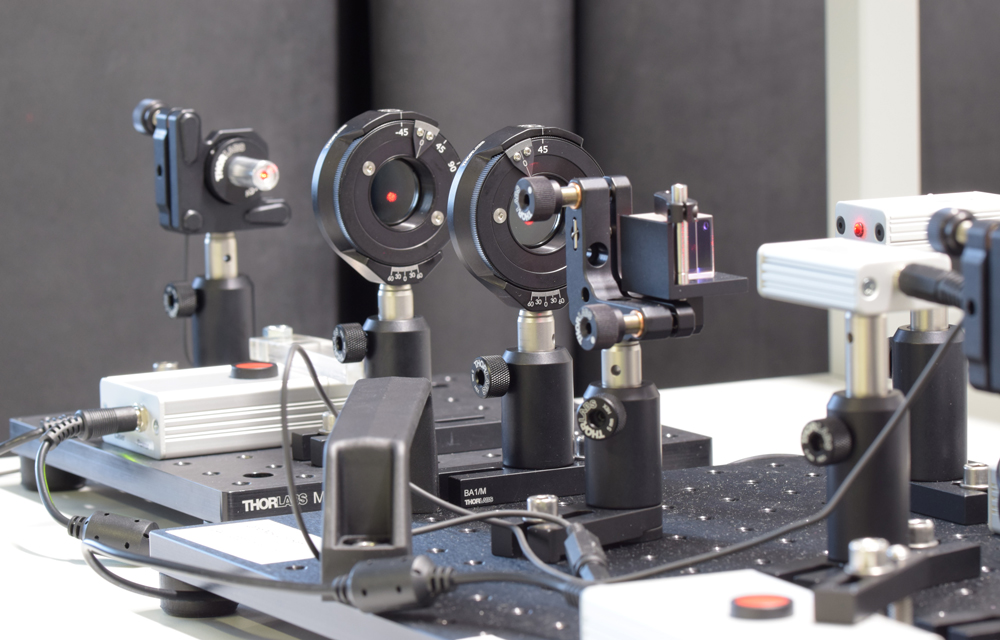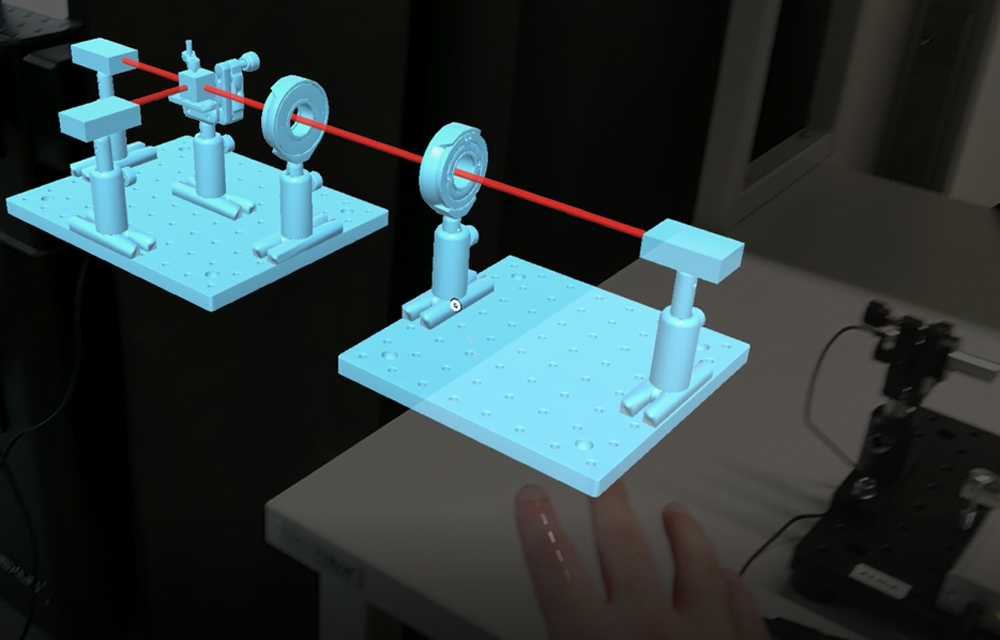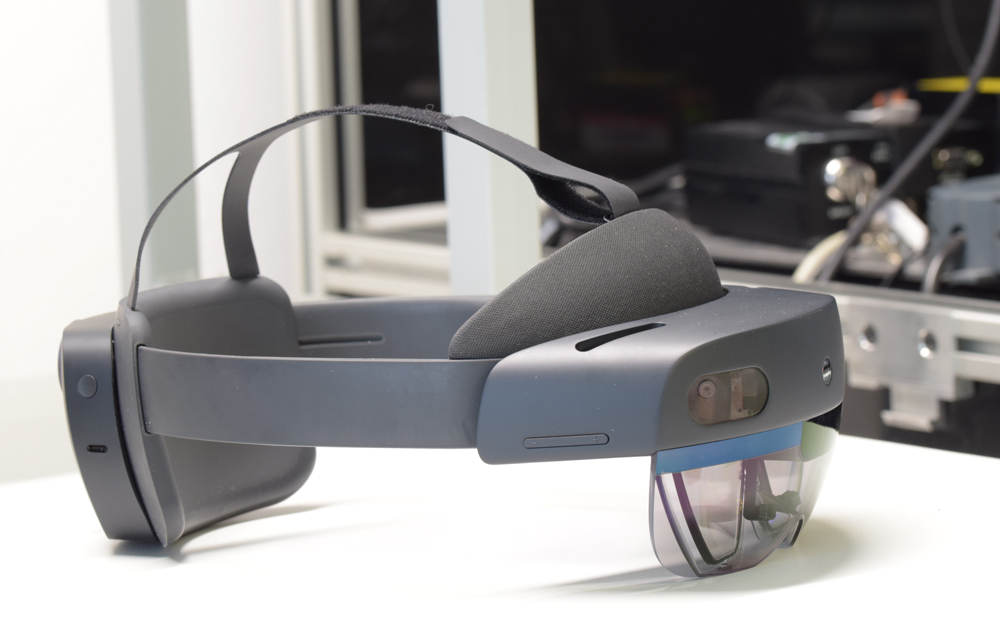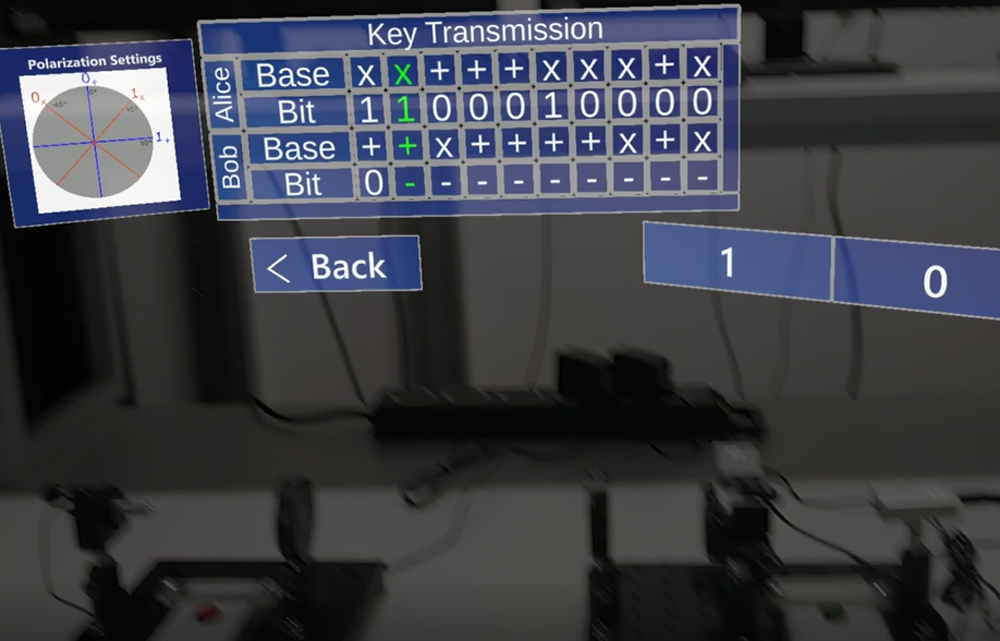The Optronics group of the Institute of Transport and Automation Technology (ITA) has established a new practical laboratory on quantum cryptography. The lab started in the summer semester of 2022; students of the master’s program “Optical Technologies” at Leibniz Universität Hannover can participate.
Quantum cryptography at ITA
The nanotechnology master’s student Alexej Haller didactically built up the teaching content and the experimental setup with optical components from the company Thorlabs. The master’s lab provides basic knowledge about the properties of quantum optical cryptography and enables a deeper examination of the topic. The contents are also particularly relevant for current research in the Cluster of Excellence PhoenixD and future research at ITA.
Novelty in digitized teaching
The team paid particular attention to using augmented reality (AR) glasses. They enable a faster transfer of knowledge, a more intensive engagement with the experimental setup, and a stronger focus on the relevant tasks. For Florian Liermann, a master’s student in computer science who was involved in the programming, the UNITY development environment offered the integration of more complex functions, such as the adaptive superimposition of 3D models or the automatic alignment of the experimental setup based on reference planes.
Starting signal for the lab
Anna Hinzmann, a mechanical engineering bachelor’s student who was allowed to test the lab, says: “It was great fun and, thanks to the assistance provided by the AR glasses, surprisingly entertaining.” The AR glasses used, “Hololens 2” from Microsoft, make it possible to check necessary prior knowledge automatically, guide actions, and convey background information. You have to see with your own eyes how the digitally supported reality flexibly recognizes your hand gestures and displays 3D models that can be placed anywhere in free space.



